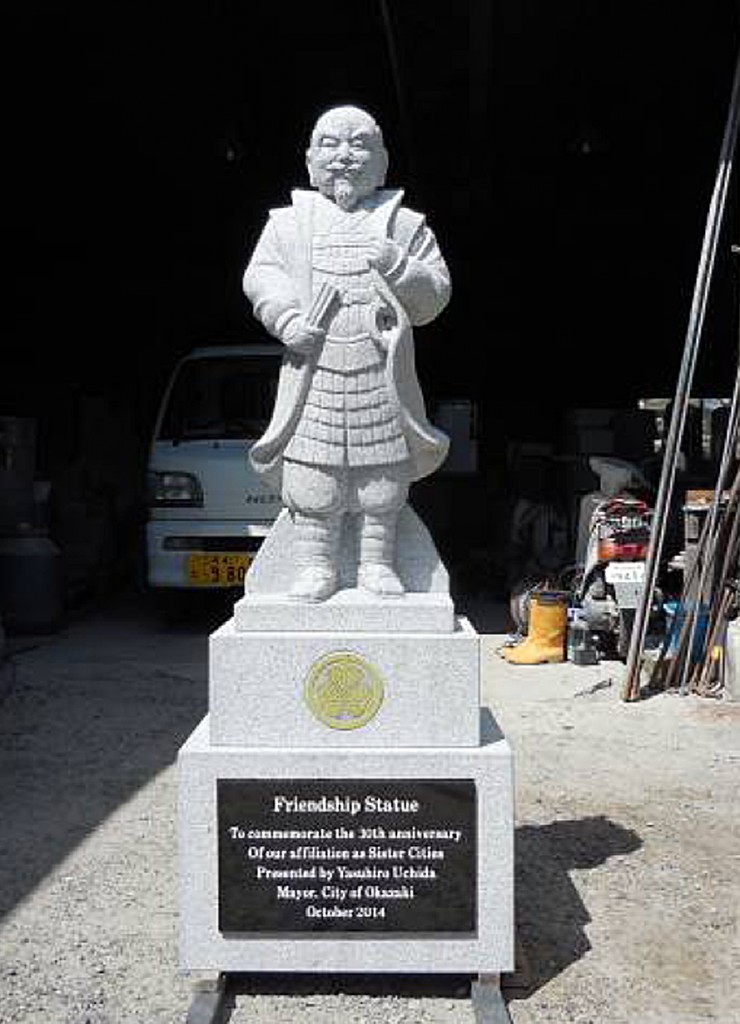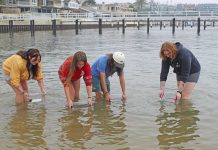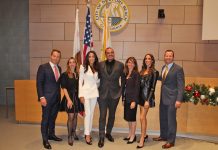A city commission discussed revisions to the city tree policies, a sculpture from a sister city, and a historical footbridge this week.
On Tuesday the Parks, Beaches and Recreation Commission reviewed the revisions to the tree policies G-1 and G-6, and approved recommending to the city council that the Goldenrod Avenue Footbridge be classified as a local historical site and that a sculpture gift from sister city Okazaki, Japan, be placed in Irvine Terrace Park.
The Newport Beach city policies G-1 and G-6 involve the retention or removal of city trees and the maintenance and planting of parkway trees.
The revisions were “sorely needed,” said Commissioner Roy Englebrecht.
Mike Pisani, acting municipal operations co-director, and the ad hoc committees tasked with studying the policies will review public comments and feedback and report back to commission in November. It will then be forwarded on to the city council for consideration.
Policy G-1 has to do with protection of the current urban forest and the rules and regulations regarding removals and G-6 has more to do with the planting of new trees, Pisani explained.
Revising G-1 was meant to clarify the policy and present the information in a more easily understood format. It also was updated with the current department name and position titles.
Problem trees are causing excessive hardscape or utility damage. No more than 250 problem trees may be removed per year. But the city doesn’t come close to that number, Pisani explained, it’s actually about 15 to 30.
It seems that 250 will never be reached, said Chair Ron Cole, and that could be tailored down to a more realistic number. Pisani agreed and said he’d discuss it with the ad hoc committee.
Trees currently listed as “other” trees will be renamed as “standard.” These types of trees make up about 95 to 97 percent of trees in the city, Pisani said.
Changes to G-1 also include deleting or updating the count of special trees to reflect removals which have occurred and adding dedicated trees donated by the public and approved by the commission. They also reduced the number of steps needed for approval of the routine removal of standard trees to be “more responsive to residents’ requests,” the staff report explains.
This will hopefully allow residents to answer questions they may have and understand the policy better, said Commissioner Walt Howald, who is on the G-1 ad hoc committee.
“The important things is this policy now includes retention, removal and maintenance,” Howald said.
The list of trees was changed for the G-6 policy.
Some of the trees on the list are prone to disease or pest, aren’t appropriate for the parkway size and create hardscape issues, or are no longer commercially available, Pisani explained.
They developed a new list that categorizes trees by the size of the parkway, he added.
The list is intended to be reviewed annually, with new species added and trees of limited availability removed, he noted.
Several residents spoke during Public comment for both items, including Ron Yeo, chairman of the Corona del Mar Residents Association’s Reforestation Committee.
”We don’t want to rush this because there are a lot of important things in here that affect the community,” he said.
He asked commissioners to review the CdM committee’s report on reforestation.
Also during Tuesday’s meeting, the PBR Commission agreed on the Arts Commission’s suggestion of Irvine Terrace Park as the site for a sculpture donated from Newport Beach’s sister city, Okazaki, Japan.
The sculpture is being presented in honor of the 20th anniversary of the Sister City relationship.
The statue is of Shogun Ieyasu Tokugawa (1542-1616), who was born in Okazaki.
Tokugawa “was the founder and first shogun of the Tokugawa shogunate, which maintained effective rule over Japan from 1600 until 1867,” the staff report explains.

— Photo courtesy city of Newport Beach
“Historians agree that Ieyasu was a gifted military leader and governmental administrator. He is considered the founder of the Edo Period, which was characterized by an unprecedented and extraordinary period of peace,“ the report reads. “He now enjoys a historical popularity commensurate with his distinguished role in the evolution of Japan.”
The commissioners were supportive of the idea, but had a few questions.
PBR Commissioner Tom Anderson wondered whether or not the location was the right spot for the sculpture. He suggested somewhere around city hall as an alternative.
Several locations were considered, said Arts Commissioner Robert Smith, and Irvine Terrace Park was chosen by the Arts Commission because of the existing lantern sculptures and Japanese black pine trees, both of which were also gifts from Okazaki.
“It seemed to work very well there. It seemed to make a great deal of sense,” he said. “We didn’t just want to plop it somewhere.”
It felt natural in that setting, he said.
The sculpture may temporarily be placed in the library patio area when a delegation visits Newport Beach in October, Smith said.
The commission unanimously approved recommending the Irvine Terrace Park placement of the statue.
Also on Tuesday’s agenda, PBR commissioners voted to recommend classifying the Goldenrod Avenue footbridge as a local historical property.
The 6-foot-wide, 243-foot-long pedestrian bridge spans Bayside Drive to connect the 300 block of Goldenrod Avenue with the 400 block of Goldenrod Avenue.
“The bridge was constructed in 1928 to span what was known then as ‘Pacific Gulch’ to provide a more direct access to the beach,” the staff report explains.
“The footbridge is certainly a unique structure and serves as a landmark that is important to the character and visual quality of the area,” staff notes in the report.
Several commissioners told stories and recalled memories about the bridge from their youth.
It has a special place in his heart, said Commissioner Walt Howald, who recalled riding his bike over it when he was young.
Growing up in Long Beach, Commissioner Kathy Hamilton said every time they visited Corona del Mar it was a “big deal” to drive under the bridge.
They unanimously approved recommending it as a local historical site to the city council.




